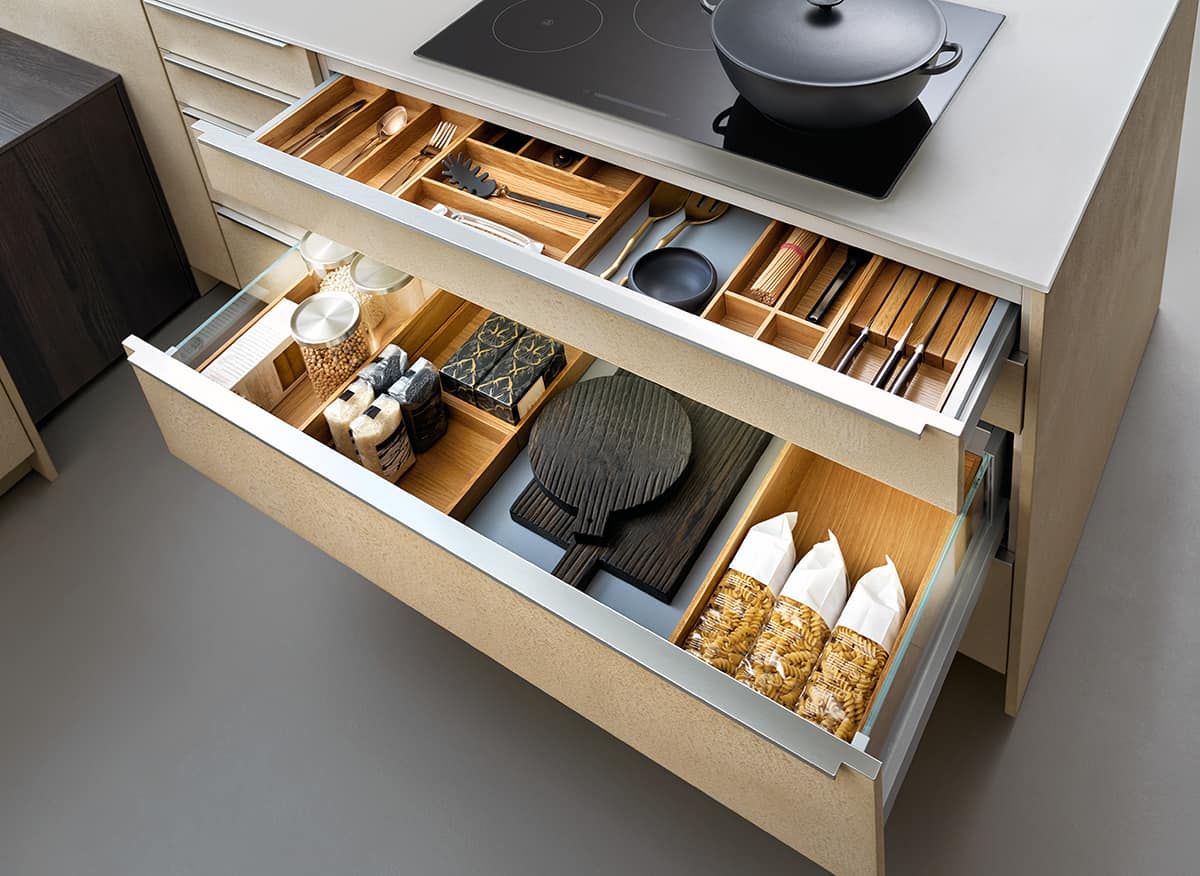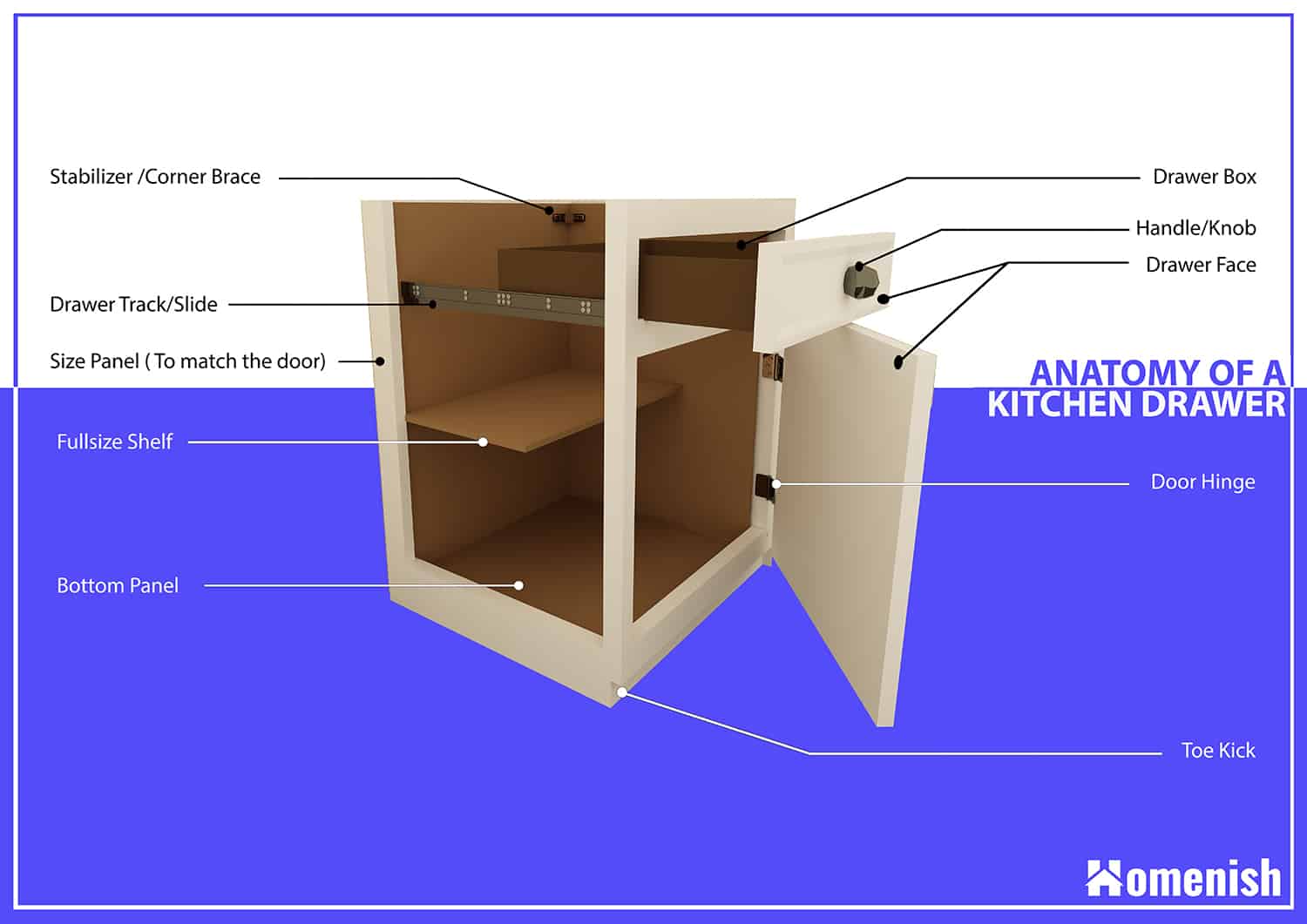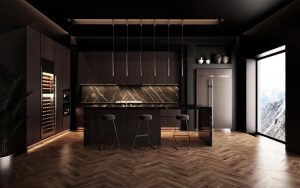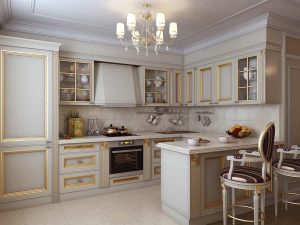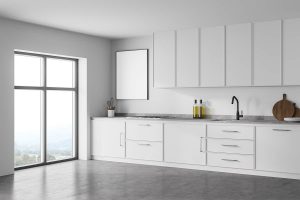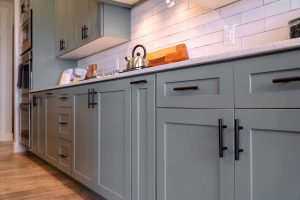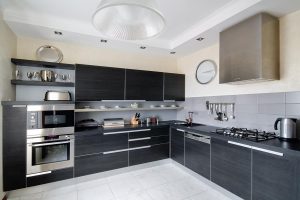Kitchen drawers come in all sorts of sizes, dimensions, designs, and styles, but the fundamental components of a kitchen drawer are all pretty much the same. If you are building a kitchen drawer from scratch, or if you’re constructing a drawer from a flatpack kitchen, then it’s useful to have an understanding of each component and how they work.
Knowing how a drawer works can also be helpful if you experience problems with drawers because if you know how a drawer is put together and what each piece of the drawer does, then you should be able to fix most issues you encounter. Here we look at the different parts of a drawer and what they are for.
Please find below an awesome diagram that illustrates all the main components of a kitchen drawer.
Anatomy of a Kitchen Drawer
A kitchen drawer can be made up of many pieces, depending on how far you want to break it down. For example, the drawer box is made of five different pieces of wood or plywood constructed together to make one piece. Here we explore the main components of a kitchen drawer.
Drawer box
The drawer box is the typical square or rectangular compartment that makes up the main portion of the drawer. In a kitchen drawer, the drawer box is usually built from solid wood in a very high-end kitchen or a type of plywood in a mid-range to low-end kitchen. The plywood might be unfinished, or it might be covered in lacquer or a type of veneer.
The drawer box is the compartment that is used to store the equipment you put inside the kitchen drawer, keeping the items from view. Typically in a kitchen drawer, most people will store cutlery, kitchen utensils, and sometimes paperwork.
Many people also have a kitchen drawer for miscellaneous items such as batteries, a small sewing kit, birthday candles, scissors, a measuring tape, a lighter, and other small objects that lack a ‘proper’ storage place.
Drawer face
The drawer face is the front of a kitchen drawer. This is part of the drawer you will see when the drawer is closed, and it will usually be finished in the same material, style, and color as the kitchen cabinets. The drawer face can be made from solid wood, plywood, or MDF and will be finished in a veneer or lacquer because it is part of the drawer that is going to be on display in the kitchen.
The drawer face is usually slightly larger than the front of the drawer box so that it completely covers any gaps around the edge of the drawer box where the mechanisms are held. This results in a sleek, custom look for the kitchen.
Glide or slide system
The mechanism which allows a kitchen drawer to open and close smoothly and easily is known as a glide system or a slide system. This is because the mechanism helps the drawer to glide or slide inwards and outwards.
The glide or slide system is made up of drawer tracks and drawer runners, but within these, there are various systems available that will cause your drawers to operate in slightly different ways. Various types of glide or slide systems include ball bearing slides, roller slides, soft close slides, under mount slides, and side mount slides.
Drawer tracks
The drawer tracks are typically fixed to the inside of the cabinet frame, where the drawers will be installed. The most basic type of track will be paired with a runner with wheels on it, and the runner will simply move forwards and backward on the wheels as they turn over inside the drawer track.
The drawer tracks will have to line up with the drawer runners for a smooth and fluid motion. In old-fashioned kitchen drawers, drawer tracks were not used. Instead, the drawer would usually have wooden runners, which slid into a cutout area at the side of the cabinet walls.
Unfortunately, this made for a number of issues surrounding the opening and closing drawers because the swelling of the wood in different temperatures could cause the drawers to get stuck, and the friction of the wood sliding against each other did not make for a smooth movement. Drawer tracks made from metal have replaced this system in new kitchen drawers, ensuring a more effortless motion.
Drawer runners
Drawer runners correspond with the drawer tracks, and they are the second main component of a drawer sliding system. The drawer runners are typically installed along the outer edge of the drawer box with screws that are drilled into place.
The drawer runners will line up with the drawer tracks on the inside of the cabinet, and when they are connected properly the drawer runners will enable the drawer to be pulled open and pushed closed with ease.
Drawer hardware
The only hardware you will find on a drawer is the handle or knob. This will be both decorative but also functional because grabbing onto the door hardware is what enables you to pull the drawer open. When choosing the hardware for your kitchen, you should ensure that it all matches or coordinates.
Most people will choose a knob or handle which is the same for all of their cabinet doors and drawers, or you could use handles on the doors and cabinets on the drawers for a more custom look. As long as the knobs and handles are made from the same material and are in the same finish, and ideally are manufactured as part of the same collection, then they will work from an aesthetic point of view.
Some kitchen drawers do not require hardware if they have a handleless design. These types of drawers will have a beveled cut-out as part of the drawer face, and this can be used to grip the drawer in order to open it. People who are looking for a sleek and minimalist kitchen tend to lean towards a handleless design for their drawers and cabinets.
